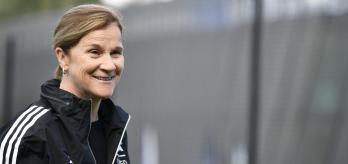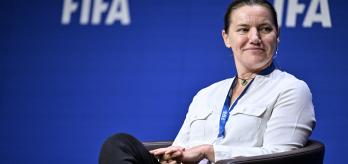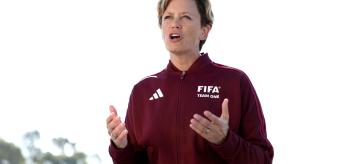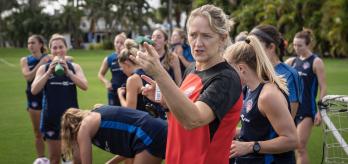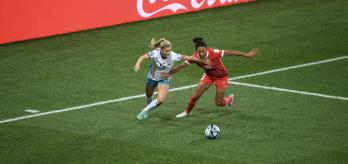00:08
How playing style and position affect physical output
The physical analysis highlighted the fact that physical demands vary depending on a player’s position and tactical role. Therefore, is important that training reflects the team’s playing style and philosophy, and that it is tailored to individual players to ensure they are equipped to deliver the coach’s tactical vision. The challenge for coaches, sports scientists, fitness experts and technical staff is to work together to design a regime that is appropriate to the job each player will be asked to do during matches.
02:30
24-hour fitness
Players only train for a few hours a day at most, but maintaining your fitness is a full-time job. This is why it is so important for teams to adopt a multi-disciplinary approach to conditioning, and for their staff to be aware of the importance of lifestyle-related factors like eating properly and getting enough sleep. Players also need access to the kinds of facilities that can facilitate recovery, such as ice baths and compression garments. This is especially important in the women’s game, where the menstrual cycle and hormonal changes can have a major impact on players’ performance.
05:13
The value of a multi-disciplinary approach
Female players sometimes struggle to access nutritionists, psychologists and women’s health specialists. Scott feels that any team supporting a female athlete should include women’s health experts, sport scientists and psychologists who can apply their expertise in a football environment. Clubs also need to understand the data coming from elite tournaments like the World Cup, and work together with national setups to close the gap between the physical demands of internationals and domestic fixtures. To do that, clubs and national teams need to share data and work together to ensure their players are in the best possible condition.
07:50
What speed zones reveal about the demands on players
Aside from matches getting longer, one of the key indicators of the increasing demands on female players is the amount of time they are spending in different speed zones. After a pronounced spike in time spent in higher speed zones at the 2015 and 2019 World Cups, the proportion of time players spend at medium speed increased again in the 2023 tournament. In light of this, it would be useful to conduct more detailed research into the way female players are accelerating and decelerating during games, especially because there appears to be a link between deceleration and cruciate ligament injuries.
10:08
Investing in performance
Increasing investment in women’s football is having a real impact at World Cups. In 2019, Scott was attached to the US Women’s National Team, and she recalls that the team moved hotels after every game and had to use public swimming pools for recovery training. In 2023, by contrast, teams had these facilities at their base camps. It will be important to ensure that players at future tournaments have immediate access to the facilities they need. This will in turn help them to deliver their best performances where it matters: on the pitch.









